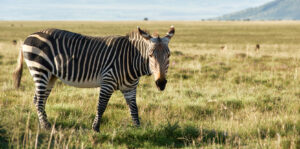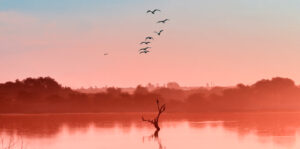Different food that zebras eat varies depending on factors like the season and availability of vegetation in their habitat. Zebras, those iconic striped creatures of Africa, have a diet that primarily consists of plant material. However, there’s more to their eating habits than meets the eye. In this article, we’ll explore the different types of food that zebras consume, shedding light on their diverse dietary preferences.
Here are some different food that zebras eat
Grasses: A Staple Diet
Grasses are a fundamental part of a zebra’s diet. These animals are highly selective grazers, favoring tender grasses over tougher ones. Their strong, grinding teeth are well-suited for breaking down fibrous grasses, allowing them to extract maximum nutrition. Zebras are often seen grazing in open grasslands, using their keen sense of smell to detect the most palatable vegetation.
Leaves and Shrubs
While grasses make up the majority of their diet, zebras also consume leaves and shrubs when they can find them. During dry seasons or in areas with limited grass availability, they turn to these alternative food sources for sustenance. Leaves and shrubs provide essential nutrients and hydration, helping zebras survive in challenging conditions.
Seasonal Variations
Zebras’ food preferences can vary with the changing seasons. During the wet season when grasses are lush and abundant, they predominantly feed on fresh, green vegetation. In contrast, during the dry season when grasses become less nutritious, zebras may resort to eating drier, less desirable plant material, adapting to the environment’s challenges.
Zebras
Water: An Essential Component
Although zebras primarily eat plant material, they also rely on water to quench their thirst and aid digestion. Access to freshwater sources is crucial for their survival, especially during hot and dry periods when dehydration can be a significant threat.
Social Grazing
Zebras often graze in groups, a behavior known as social grazing. This approach allows them to collectively search for the best patches of grass and leaves while benefiting from safety in numbers. They alert each other to potential dangers while they feed, enhancing their chances of survival.
Zebras in the wild
Adaptation and Survival
Zebras’ dietary adaptability plays a crucial role in their survival. Their ability to switch between different food sources based on availability and season helps them endure the challenges of their natural habitat. This adaptability, coupled with their strong sense of community, allows zebras to thrive in the diverse ecosystems they inhabit.
In conclusion, zebras may be best known for their striking black-and-white stripes, but their dietary versatility is equally intriguing. From grasses to leaves and shrubs, zebras have developed a range of food preferences and behaviors that help them thrive in the ever-changing landscapes of Africa. Their ability to adapt to varying conditions is a testament to their resilience in the wild.


